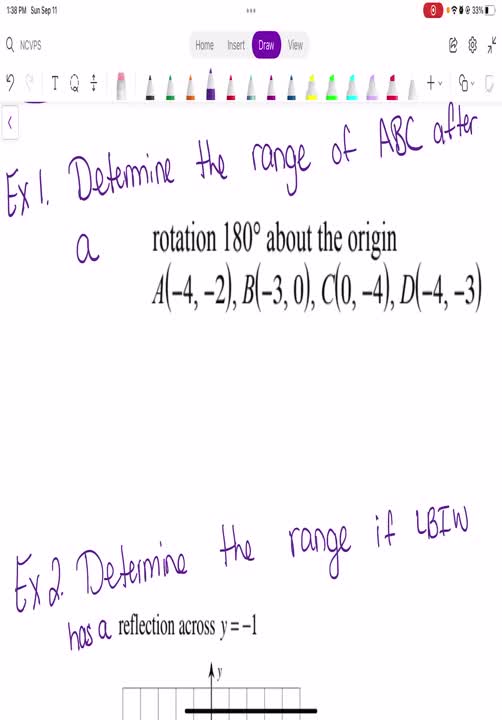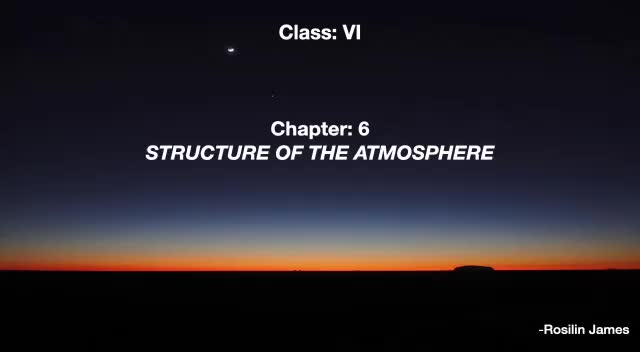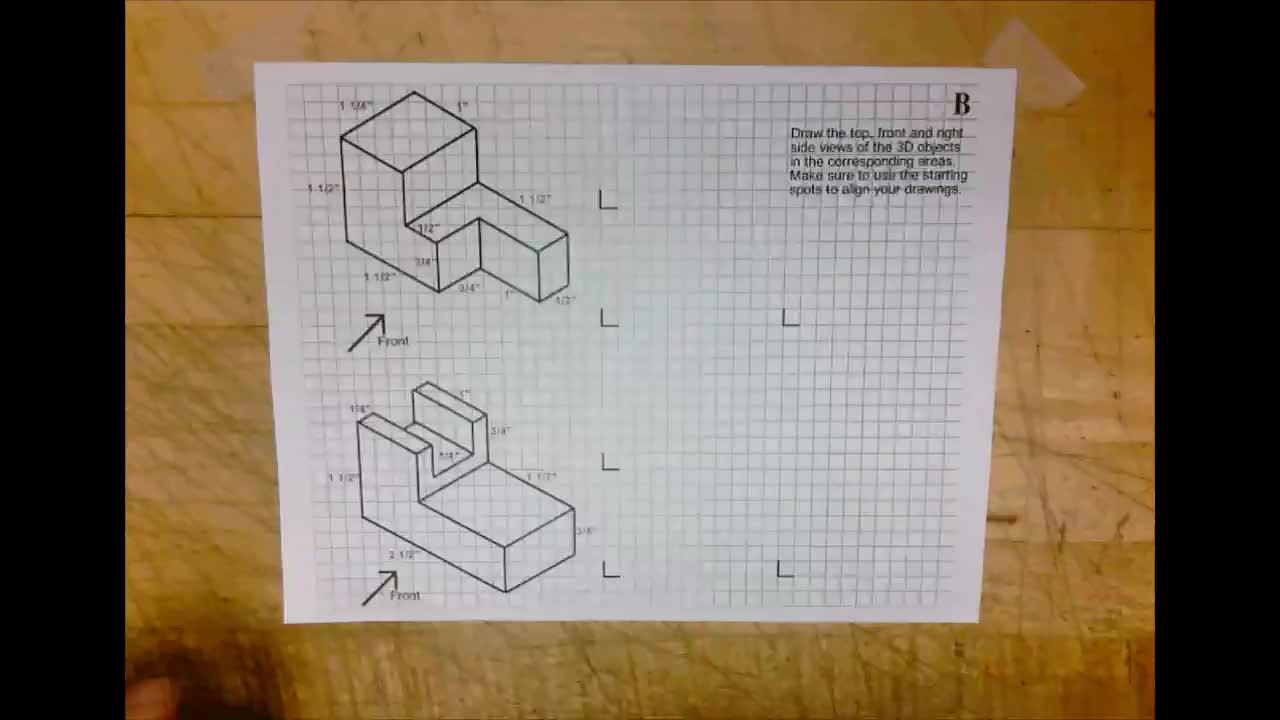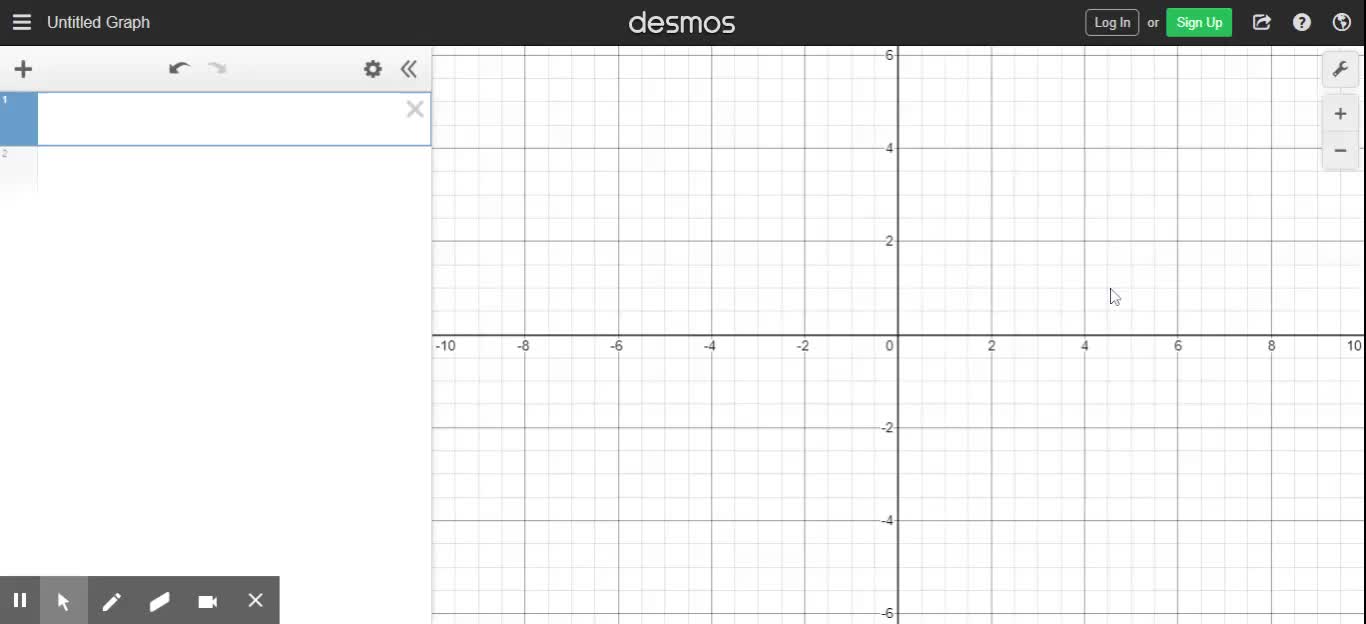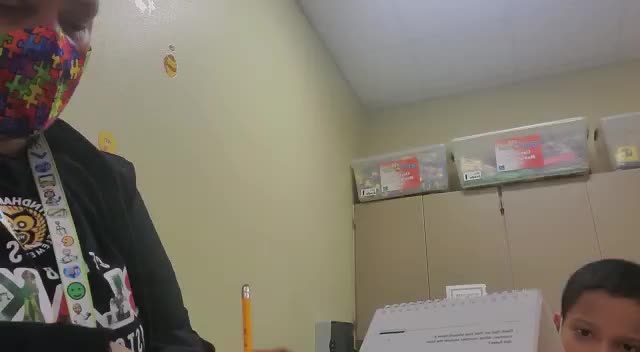Geo 11.2 Chords and Arcs
High School / Math / Geometry
Smelly cat smelly cat what are they feeding you? Everybody's ready. It's not your fault. Monica. They won't take you. TV. Four. We're learning about chords today. And arcs. But I'm not going to bring in Noah here. What exactly is a chord? That's a good question. Okay, a chord is a segment whose endpoints are on a circle. That's easy enough, and you've heard the term arc before. We need to know both of these chord and arc. An arc is just part of a circle. So let's draw a picture here. Okay, so we have the circle, nice and perfectly drawn. Of course, and we have the red line here. That is the chord. A chord is a segment whose endpoints are on a circle. So is the diameter of a circle a chord? Yes, it is, okay? It's a chord that goes through the middle of the circle, but this red line right here. We can put all of these would be chords. You have two endpoints that are on the circle. All right, so then, as you know, an arc, an arc, as you know, is P sub the circle. It's this highlighted part right here. So if you were to take a circle and cut it in two places, you'd be left with an arc. Two arcs actually, a major one and a minor one. All right, so what are some theorems that we have to learn about these chords and arcs? By the way, mister brass calls it a chord. Ramstein, please explain to her it's not a chore. For goodness sake, teacher of the year. Anyways, first theorem. Within a circle, there's two things that you have to know. That's why we got the little one and little two there. First thing, king central angles have congruent arcs. And congruent arcs have congruent central angles. All right, what does this look like? If I had to draw a picture real quick, let's get that up. Okay, we have a nice little circle we've drawn here. With the first theorem says is that congruent central angles. So if I know that this central angle in this central angle are congruent to each other, then we also know that the arcs are congruent to each other. The measures of the arcs, all right? And it works the other way around as well. The converse is true. If you have congruent arcs, then you will also have congruent central angles. All right, so that makes common sense. We know that the measure of an arc is equal to the measure of the central angle. So if the central angles are congruent then the arcs would be congruent to. That's not too difficult. Okay, theorem number two, within a circle, congruent chords have congruent arcs. Okay, so what does that mean? What I'm going to do is I'm going to draw a chord for each of these arcs here. So to do this, you have to be really careful. I'm going to use red. It's a different color. But a chord is a straight line. The arc is part of a circle. So the arc is curved, the chord is not. I don't know the first one was there. Let's try that again. So the chord goes straight across. That was a little weird. So the chord with the two other segments here is going to make these two radii and the chord will make it triangle. Remember the arc is the curved part. Okay, so this theorem two says within a circle congruent chords. So if these red chords are congruent to each other, congruent chords have congruent arcs. That means that the purple part would be congruent to each other and congruent arcs would have congruent chords. That's it. That's for theorem one and two. It's that simple. All right, so what do these theorems mean in terms of figuring out some problems here? And solving some circle problems. So I have three different examples. And they're all different from each other because this one involves chords. We have arcs and then some weird stuff over here. We'll get to it. But the first example, we have congruent central angles. And if you remember, congruent central angles have congruent arcs and congruent arcs have congruent chords, so that means that this chord right here is congruent to this chord right here, or 15 is equal to two X minus three. All right? If you add three to both sides, this is algebra one step. This is easy. You get 18 equals two X and then we divide each side by two, you're going to get 9 equals X all right, so we solve for that missing variable. X equals 9 or 9 equals X there, done. Okay, let's change up the color. We'll do the next example. We have congruent central angles again. Notice a little Mark right there. So that means that this arc is congruent to that arc. So we have 44 is going to be the same as X squared -7 X now, this is a quadratic equation. Something in your head should go, ah man, quadratic equation. That means we're going to have to do some factoring. All right, so we're going to subtract 44 from each side. You got to set it equal to zero, so we can use the zero product property. All right. Remember that here, let's use this little X thing that is Sully taught us a long time ago. We get negative 44 negative 7. Okay, what two numbers multiply to negative 44 and add to negative 7. We're looking at negative 11 and positive four. So zero is going to equal. Here comes our factors right here. X -11 or X plus four. Now, because you're multiplying it equals zero, you have to set each one equal to zero. All right, so you're going to get X equals 11 for the first factor, X plus four equals zero, and X equals negative four. So you might be tempted to say negative four, don't like that. Throw it out. But what you have to do is plug it in first. All right, so I'm going to undo that throw it out because we got to plug it in to make sure. You can't have a negative arc length. So what we have here of 44, when you plug the 11 in, you get one 21 -77. That's positive. That's going to equal 44. We're good to go. But the negative four, you plug that in. We're going to get a positive 16 minus negative 28. I'm doing a little math in my head here, but when you plug everything in, it equals a positive 44. So that arc length is positive. That means this root is okay. We can have X equals negative four, not a problem, and we can have X equals 11. So this your answer technically is X equals 11 or X equals negative four. And yes, you need both of those. You can't have one or the other. That's not what the orb means. It means either one can be an answer. Let's look at the last example. Watch pause the video and try to figure it out by yourself. Go. All right, here's what I hope you figured this out. Substitution. Because look, this central angle is congruent to this central angle. All right, so therefore you get X equals Y plus three. Got it. We get two X minus Y we have central angle here, central angle here. Two X minus Y equals 5. So if you remember how to do this, you have to take. We already have X's solve for it. All right, X equals Y plus three. So in the other equation, here's the X, we're just going to put Y plus three. All right, so we get two times Y plus three. All right, because we did substitution right there. You got to write the rest of the equation. Minus Y equals 5. All right, so let's do some algebra one stuff two Y plus 6. Minus Y equals 5. We get Y plus 6 equals 5. You should be okay with all this stuff. Why is negative one? You then have to go back and plug in your Y equals negative one. You can pick either equation, but I like the first one because it looks more simple. So X equals Y plus three, we know that Y is negative one. So X equals negative one plus three, which is two. So our answer, the solution to the system is two negative one. So when I plug it in, you have to check both, again, it's just like the other circle problem, you have to check to make sure that you're not going to get a negative distance here. So what do we get? X is two, Y is negative one. So if X is two, this length is two. What do we get? Y is negative one, so negative one plus three is two. You're good to go there. Okay, here you get two times two, which is four, minus negative one. That's a 5. We're good to go. That one's just a number there, so that will never change. So the answer to negative one is a solution to this system. Easy enough, huh? Let's go to the next theorem. New theorems. All right, our next theorem, we're pretty creative here. We named it theorem number three, but that's pretty creative, right? It's that a diameter or radius. We didn't put radius. But or radius, maybe we should add that or radius, put that in your notes or radius, that is perpendicular to a chord bisects the chord and its arc. All right, so what does that mean? I'm going to show you here. Here we have a radius. Which is simply half a diameter. We could make that we could extend that if we wanted to. But it's perpendicular to a chord. Here's the chord right here. All right, so what does that mean? It bisects the chord, that means that this side is congruent to this side. Those two segments are congruent. So as they tell us this segment here is 10.3, I know the segment on the top is also 10.3. All right, well, how's that going to help us? Well, let's start figuring stuff out. They want us to find X, okay? So what do we got? Oh, this is too easy. Let's look. I gave you this example because it's too easy. Look, the whole diameter is 23.4. So 23.4, let's divide that by two and find a radius. All right, so that's going to equal 11.7. So it's 11.7 on this side, and it's 11.7 on this side. But you know where it's also 11.7 from here to here. Ah, that whole thing is 11 points 7. Okay, well look, this is called the segment edition posture. Remember, way back in unit one, this much is 5.5, the whole thing's 11.7. So 5.5 plus X is going to equal 11.7. All right. X is going to equal 6.2. That's easy enough. All right, we didn't use a Pythagorean theorem there. Most of these were going to. All right, let's zoom in on this problem here. Let's look. What do they tell us? They give us three pieces of information. They tell us X, which is this line right here. All right, that's good to know. 15.9. That's half of the chord, and because it's perpendicular, we know that this segment is congruent to that segment there. And they also tell us the radius, which is 17.4. What I'm going to ask you to do is use your imagination and draw another radius so that we create a right triangle. So here's one option we can do one here. Look, we have a right triangle now. But I think it's more beneficial to draw this right triangle right here. All right, so what do we know if we do that? I always like to take the triangle and draw it separately. Ta-da. That's my best attempt right there. Put the right angle right here. Okay, so on the bottom we have 15.9. The hypotenuse is 17.4 because that's another radius, and remember the radius of 17.4. And we don't know what this leg is. So I'm going to call it Y I'm not going to call it X because I already have an X in the problem. And I don't want to confuse anybody. So if you look, we have a right triangle. Guess what's going to help us out here? A squared plus B squared equals C squared. The Pythagorean theorem. We use this thing left and right in this course. All right, remember that the hypotenuse has to go in for C all right, so we're going to get 15.9 squared. Plus Y squared is going to equal 17.4 squared. All right, so if we figure these numbers out, 17.4 squared, we get three O 2.76. See how they snuck that in there. Tricky, mister Kelly, 252.81 is 15.9 squared. Y squared we don't know, but when we subtract, we get 49.95. All right, next step takes square root. Square root K that cancels the squared. We get Y equals 7.06. Now how far do we have to go? This actually goes zero 6 7 5 three blah blah blah. Okay, so what they're going to ask you to do is round to the nearest tenth, which is this position right here. So you need to look at the place value on the right. This is a 6 so that zero is going to go up. So we're going to say Y equals 7.1 here. And we're all set to go. But that's why it's not X, all right? So back to my original problem, why is actually? We didn't mark it on the picture itself, but why is this value right here? So X plus Y is going to equal 17.4, because that's a radius from the center of the circle out. So we know what Y is. So X plus 7.1 is going to equal 17.4. You're going to get X equal to 10.3. That's our answer right there. Do you need to set up an equation here, not really? You can just subtract if you want to. If it makes more sense. So all of these, all of these probably use the Pythagorean theorem. How about that for a statement? All of these, for sure, probably used with agath theorem. So here are two problems. I want you to pause the video and do these two all by yourself. You have the tools to do it. Pause the video, go. Okay, I'm back. I hope that you did these problems. You put your best into it. Let's look at the first one. A squared plus B squared equals C squared. If this half of the chord is 16.2, then the other half is as well, because they're perpendicular. That's theorem three. So we plug in. We get X squared plus 16.2 squared equals 18.8 squared. You square both. You get X squared equals 91. Take a square root. And we get X equals 9.53 blah blah blah. You round it to the nearest tenth because the place value on the right is a three, then it does not round up. Let's look at the next one. All right, so same situation. You have half of the cord. So I wrote it over there. We get Y I remember I wrote my Y down. So we get a squared plus B squared equals C squared. All right, plug in the values. You're going to get Y squared equals 39.95. Take a square root, you get Y equals 6.3. Keep in mind though, that's only the leg of the triangle. X is actually that other little segment between the chord and the edge of the circle. So what do we have to do? Well, you have to figure out what the radius is. What is the radius of the circle? All right, so when we look here, the radius is 12.6. That's what X plus Y should equal then, 12.6. So our equation, X plus Y equals 12.6, you plug in Y, you subtract, you get X equals 6.3, coincidentally, same values that Y that's just a coincidence, wow, play with your mind there. All right, so those two examples. You know what I need? That was a lot of stuff. Let's have a little break and do a little more learning some chords. Lesson one, chords. Now, um, I don't know the actual names of the chords. But I made up names for the way my hand looks while I'm doing them. So then this is bear claw. Okay. Turkey leg. And old lady. What an interesting approach to guitar instruction. Phoebe is one of my all time favorite Friends characters. I'm sure she's yours too. All right, so last type of example, chord CE 24 inches long. What else we know? It's 5 inches from the center of circle a so we're creating this situation. When you measure distance from a line to a point, it's the shortest distance, creates a right angle. They want us to first find the radius of circle a and then find the measure of arc CE. All right, so let's work on the radius part. I want you to use your imagination, they want us to find the radius. So I'm going to draw one in right here. From a to E because look, we got 5. We got half of 24, remember 24 goes from C to E so half of 24, let's just label that now. That would be 12. All right, so this is a right triangle. We can use our friend Pythagoras's theorem here, a squared plus B squared equals C squared. I'm going to put an X on the hypotenuse. That's the one that would be isolated here by itself. The other two, 5 squared plus 12 squared. All right, that's going to equal one 69 when you work it all out and you're going to get X equals 13. Okay, that's just the Pythagorean theorem. I went fast, but you should know how to do that. All right, so the radius, I'm going to be very clear. The radius equals 13 inches. We know that. That answers our question. The first part of our question. Next one, the measure of arc CE. All right, so let's look at it. The measure of arc CE one thing that we know is that the arc is equal to the measure of the arc is equal to the measure of the central angle. So if I draw another line here, and I can find the measure of this central angle, I'll know the measure of the arc. Well, I'm going to draw another line here. We're using our imagination all over the place. If we can find this angle here, then we will know the measure of this arc. And it would be the same on the other side. They're basically the same here. They'd be congruent. Well, how do we do that? How can we find the measure of this angle? So God told us we're going to be looking at the toe part here. Remember toa tangent, opposite over adjacent. I mean, look here at the right triangle. What do we have? Opposite adjacent. Okay, we have an opposite side of 12 and adjacent side of 5, so we know that the tangent of whatever the angle is. We call it theta equals 12 over 5. Okay, how do we solve that? Theta is going to equal the inverse tangent. Remember Sully doing this? 12 over 5. All right, if you work all of that out in your calculator, you're going to get a theta value. Make sure that you're in degrees, please. Don't do it. Remember hit the mode button. Make sure you're in degrees. You're going to get a theta value of 76.3801. Blah, blah, blah, blah, blah. Okay, we want it rounded to the nearest tenth. So we're going to round it now to 67.4. That's what theta equals. All right, so that's this angle right here. Now, they're asking us to find the measure of arc CE. That's the whole yellow part here. So we need both. It starts at C goes all the way to E so we need the angle that starts on this segment AC and goes all the way to AE. So that is two of the thetas that we found. So we need two of these. So times two, what are we going to get here? One 34. Now you know what I do is I just leave this in my calculator and hit times two. And I'm going to get one 34.76. All right, so that's the measure of angle, the measure, let me write all this out. The measure of angle CAE, CAE. Equals one 34.76, which we're going to round it to. Remember, we want the nearest tenth that makes everybody happy, one 34.8. And the measure of the central angle is the same as equal to the measure of the arc that it intercepts. So CE. So last part, the measure of our CE is going to be equal to one 34.8. They're the same. And we are all done. I'm going to leave you with a little more Friends. Hey, make sure that you practice all of these. Remember, if you have questions, ask your teacher. This is mister Kelly and baum holder. Remember, it's nice to be important. It's more important to be nice. You really think I'm ready? Wow. Cool. Okay. Was the court at least Greg before? No, no.
